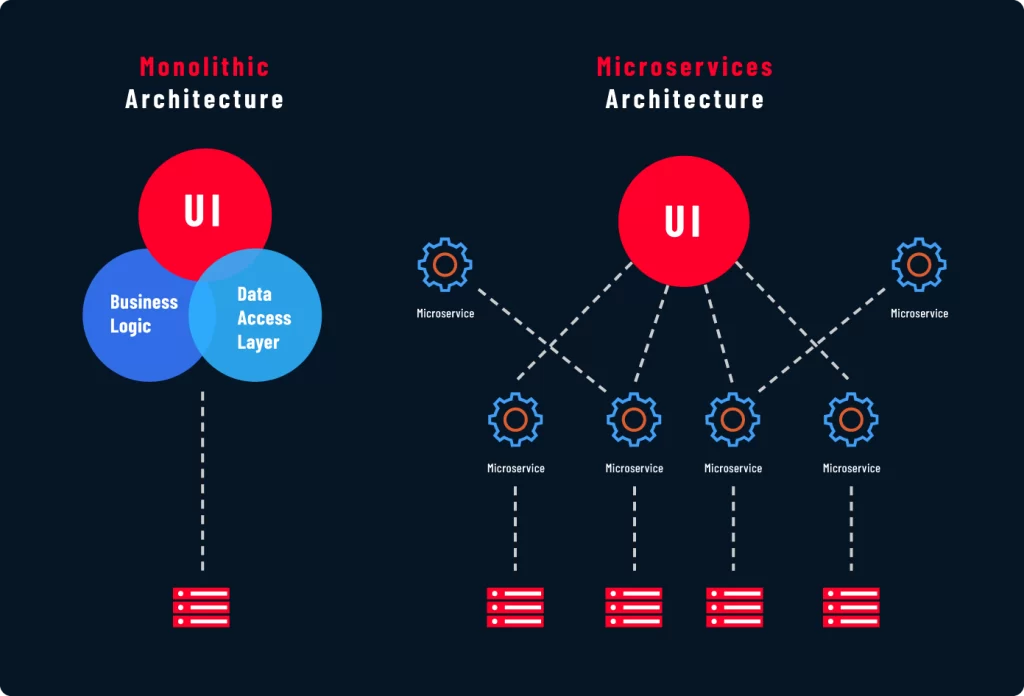The choice between monolithic architecture and microservices depends on various factors and the specific requirements of your application. There is no definitive answer as to which one is universally better, as both have their advantages and disadvantages.
Monolithic Architecture:
A monolithic architecture is an approach where all components of an application are tightly coupled and deployed as a single unit. Here are some of its characteristics:
- Simplicity: Monolithic architectures are typically simpler to develop, test, and deploy since the entire application is contained within a single codebase.
- Performance: Monoliths can be more efficient in terms of performance since they avoid network communication overhead that microservices might have.
- Easier Development: Developing new features or making changes to an application is often easier in a monolithic architecture since all components are in one place.
- Scaling: Scaling a monolithic application can be more challenging. You have to scale the entire application even if only a small part of it is experiencing high demand.
Microservice Architecture:
In a microservice architecture, an application is composed of loosely coupled, independent services that communicate with each other over a network. Here are some characteristics of microservices:
- Scalability: Microservices allow individual services to be scaled independently, which enables better resource utilization. You can scale only the specific services that require more resources.
- Flexibility: Each service can be developed, deployed, and scaled independently, allowing for greater flexibility and agility. Teams can work on different services simultaneously, using different technologies if needed.
- Fault Isolation: In a microservice architecture, if one service fails, it does not necessarily bring down the entire system. Services can be developed with fault tolerance in mind, providing better resilience.
- Technology Diversity: Microservices enable you to choose different technologies for different services, which can be beneficial if you have specific requirements that are better addressed by certain technologies.
However, microservices also introduce complexities such as service discovery, network communication, and data consistency across services. Building and managing a microservice architecture can be more challenging than working with a monolithic system.
In conclusion, monolithic architectures are generally simpler to develop and deploy, while microservice architectures offer greater flexibility and scalability. The choice between them depends on factors like the complexity of your application, scalability requirements, team size, development speed, and the level of fault isolation desired. It is important to evaluate these factors and consider the trade-offs before deciding which architecture is more suitable for your specific use case.

